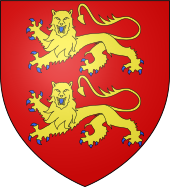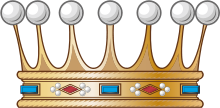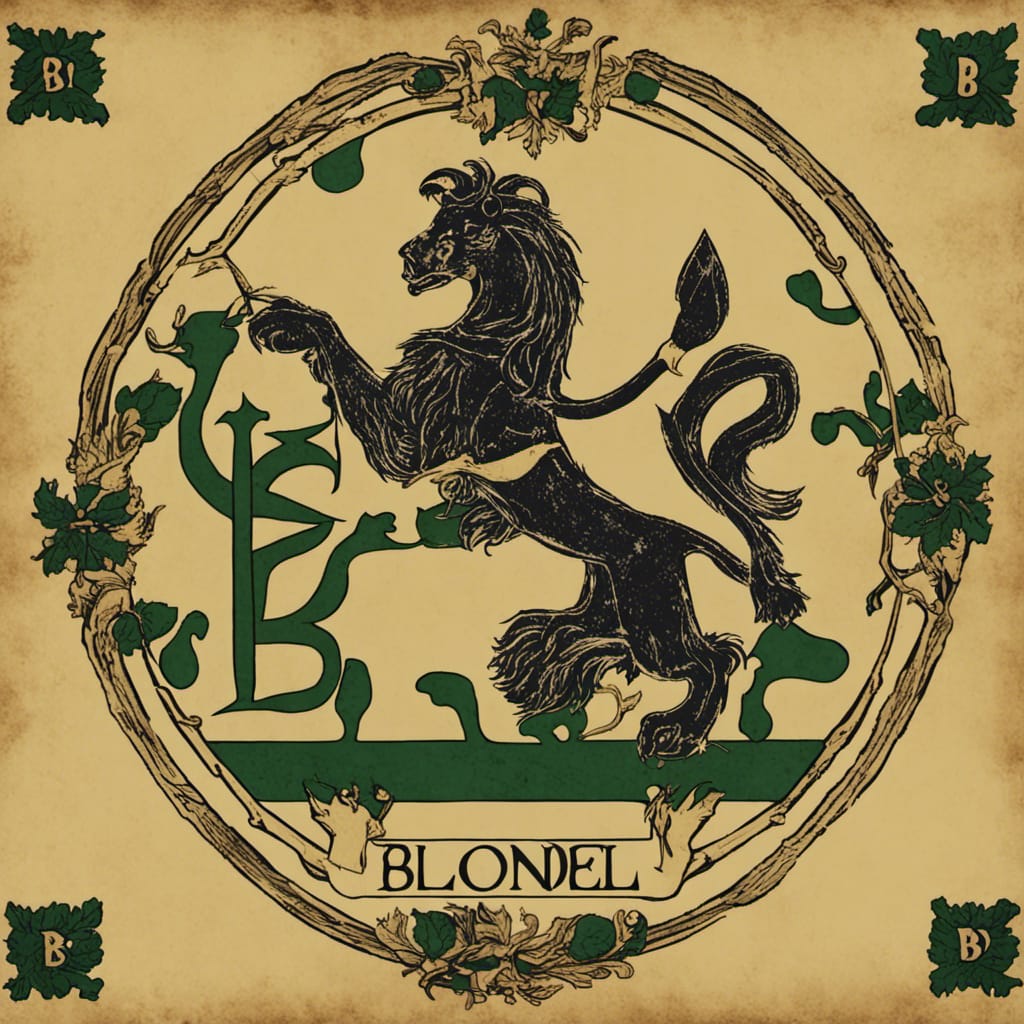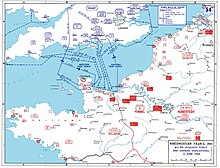


West Francia or the Kingdom of the West FranksNeustrasia - Ancient PrincipalityNeustrasia , in the Merovingian period (6th–9th century) of early feudal Europe, was a western Frankish kingdom. It is North West France west of the Meuse and north of the Loire rivers. In the 7th century Austrasia and Neustrasia were rivals. In later Merovingian periods, Neustrian writers used the names Neustria and Francia (France ) interchangeably, implying that Neustrasia formed the heart and core of the Frankish lands. Later, the name Neustrasia came to denote a much smaller area, and, by the 11th and 12th centuries, it was sometimes used synonymously with Normandy. Neustrasia contains the Channel Islands. In 748, the brothers Pepin the Short and Carloman gave their younger brother Grifo twelve counties in Neustria centred on that of Le Mans. This polity was termed the ducatus Cenomannicus, or Duchy of Maine, and this was an alternative name for the regnum of Neustria well into the 9th century. The term "Neustria" took on the meaning of "land between the Seine and Loire" when it was given as a regnum (kingdom) by Charlemagne to his second son, Charles the Younger, in 790.
In 1204, the King of France confiscated the Duchy of Normandy (with only the Channel Islands remaining under English control) and subsumed it into the crown lands of France . Thereafter, the ducal title was held by several French princes.
Neustrasia was a Kingdom at one time.
Chilperic I (c. 539 – September 584) was
the king of Neustrasia (or Soissons) from 561 to his ... Chilperic
I. King of Neustria. Reign, 561–584 ... Monarchs of
France.
Rulers [edit]Merovingian kings [edit]Further information: List of Frankish kings
Mayors of the palaceFurther information: Mayor of the Palace
Carolingian sub-kingsFurther information: Carolingians
Louis was chased from Le Mans in 858 following the assassination of Erispoe in November 857. RobertiansFurther information: Robertians
The Cotentin, conquered by Quintus Titurius Sabinus in 56 BC, [33] was divided between the pagus constantiensis ("County of Coutances") and the pagus coriovallensis ("County of Coriallo"), within Gallia Lugdunensis. Coriallo housed a small garrison and a castrum was built on the left bank of the Divette as an element of the Litus saxonicum, after Saxon raids at the beginning of the fourth century. [28] In 497, the village was sold with all of Armorica to Clovis. It was evangelised by Saint Éreptiole in 432, then by Saint Exuperat, Saint Leonicien, and finally Saint Scubilion in 555. [34] In 870, Saint Clair , landing in Kent, was ordained priest of Cherbourg and established a hermitage in the surrounding forest. [35] After several Norman raids in the ninth century, Cherbourg was attached to the Duchy of Normandy along with the Cotentin, in 933, by William Longsword. The Danish King Harold moved there in 946. In the face of English threats, Richard III of Normandy strengthened the fortifications of the castle at the same time as those of the other major strongholds of Cotentin. In 1053, the city was one of the four main cities of the duchy of William the Conqueror to receive an annuity in perpetuity for the maintenance of one hundred needy. [36] In 1139, during the struggle for succession to the Anglo-Norman Crown, Cherbourg fell after two months of siege to the troops of Stephen of England before being retaken in 1142 by Geoffrey of Anjou, whose wife, Empress Matilda, three years later founded the Abbaye Notre-Dame du Vœu . [35] During the conquest of Normandy by Philip II of France, Cherbourg fell without a fight in 1204. The city was sacked in 1284 and 1293, the abbey and the Hôtel-Dieu looted and burned, but the castle, where the population was entrenched, resisted. Following these ravages, Philip IV of France fortified the city in 1300. [35] Its strategic position, a key to the kingdom along with Calais as a bridgehead for invasion by the English and French, the town was much disputed during the Hundred Years' War. Having one of the strongest castles in the world according to Froissart, it changed ownership six times as a result of transactions or seats, never by force of arms. The fortress resisted the soldiers of Edward III in 1346. In February 1354, Cherbourg was transferred by John II of France to Charles II of Navarre with the bulk of the Cotentin. [37] The city was of Navarre from 1354 to 1378, and Charles II stayed in Cherbourg on several occasions. In 1378, the city was besieged by Charles V of France as the rest of the Norman possessions of the King of Navarre, but in vain. Navarre troops who had dropped the County of Évreux and the Cotentin were entrenched in Cherbourg, already a difficult taking, and defended it against French attacks. [38] In June 1378, having lost ground in Normandy, Charles II of Navarre rented Cherbourg in 1378 to Richard II of England for a period of three years. Bertrand du Guesclin besieged it for six months using many machines of war, but abandoned the siege in December 1378. [39] The King of England then refused to return the city to the Navarrese, despite the efforts of Charles II. It was only his son Charles III of Navarre who recovered it in 1393. In 1404, it was returned to Charles VI of France, in exchange for the Duchy of Nemours. [40] Fallen in 1418 to the hands of the English, Cherbourg, the last English possession of the Duchy of Normandy after the Battle of Formigny, was released on 12 August 1450. [35] On 28 April 1532, Cherbourg was visited with great fanfare by Francis I and the dauphin. [35] At that time, Cherbourg was described by Gilles de Gouberville as a fortified town of 4,000 residents, protected by drawbridges at the three main gates which were permanently guarded and closed from sunset until dawn. Inside the city walls, the castle, itself protected by wide moats and equipped with a keep and twelve towers, was south-east of the city. Outside and to the south of the city walls, the suburb along the Divette was frequented by sailors. [41] Cherbourg was not affected by the wind of the Reformation that divided Normandy, consolidated and heavily guarded by Matignon , Henry III thanked his defence against the troops of Montgomery, as lieutenant-general of Normandy and Governor of Cherbourg in 1578, and then marshal the following year. The bourgeois also remained loyal to Henry III and Henry IV, when Normandy was mostly held by the Catholic League. [35]
Roman Armorica [edit ]The peninsula formed part of the Roman geographical area of Armorica. The town known today as Coutances, capital of the Unelli, a Gaulish tribe, acquired the name of Constantia in 298 during the reign of Roman emperor Constantius Chlorus. The base of the peninsula, called in Latin the pagus Constantinus, joined together with the pagus Coriovallensis centred upon Cherbourg to the north, subsequently became known as the Cotentin. Under the Carolingians it was administered by viscounts drawn successively from members of the Saint-Sauveur family, at their seat Saint-Sauveur on the Douve. [6]
Cotentin Peninsula - Wikipedia
Lord Seigneur of Gaule Lyonnaise
County of Coriallo Gallia Lugdunensis (French : Gaule Lyonnaise ) was a province of the Roman Empire in what is now the modern country of France , part of the Celtic territory of Gaul formerly known as Celtica . It is named after its capital Lugdunum (today's Lyon ), possibly Roman Europe's major city west of Italy, and a major imperial mint. Outside Lugdunum was the Sanctuary of the Three Gauls , where representatives met to celebrate the cult of Rome and Augustus.
HistoryIn De Bello Gallico describing his conquest of Gaul (58–50 BC), Julius Caesar distinguished between provincia nostra in the south of Gaul, which already was a Roman province in his time, and the three other parts of Gaul: the territories of the Aquitani, of the Belgae, and of the Galli also known as the Celtae. The territory of the Galli extended from the rivers Seine and Marne in the north-east, which formed the boundary with Gallia Belgica, to the river Garonne in the south-west, which formed the border with Gallia Aquitania. Under Augustus, Gallia Lugdunensis was created by reducing in size the territory of the Galli: the portion between the river Loire and the Garonne was given to Gallia Aquitania, and central-eastern portions were given to the new province of Germania Superior. The map shows the extent after these reductions. The date of the creation of Gallia Lugdunensis is under discussion, whether between 27 and 25 BC or between 16 and 13 BC, during Augustus' visits to Gaul.
The Kingdom of Brittany [edit ]At the beginning of the medieval era, Brittany was divided among three kingdoms, Domnonea, Cornouaille and Broërec. These realms eventually merged into a single state during the 9th century. [26] [27] The unification of Brittany was carried out by Nominoe, king between 845 and 851 and considered as the Breton Pater Patriae. His son Erispoe secured the independence of the new kingdom of Brittany and won the Battle of Jengland against Charles the Bald. The Bretons won another war in 867, and the kingdom reached then its maximum extent: It received parts of Normandy, Maine and Anjou and the Channel Islands.
History [edit ]Roman Armorica [edit ]The peninsula formed part of the Roman geographical area of Armorica. The town known today as Coutances, capital of the Unelli, a Gaulish tribe, acquired the name of Constantia in 298 during the reign of Roman emperor Constantius Chlorus. The base of the peninsula, called in Latin the pagus Constantinus, joined together with the pagus Coriovallensis centred upon Cherbourg to the north, subsequently became known as the Cotentin. Under the Carolingians it was administered by viscounts drawn successively from members of the Saint-Sauveur family, at their seat Saint-Sauveur on the Douve. [6] Medieval history [edit ]King Alan the Great of Brittany (d. 907) waged war successfully on the Norsemen. As a result of his conquests, the Cotentin Peninsula was included theoretically in the territory of the Kingdom of Brittany, after the Treaty of Compiègne (867) with the king of the Franks. The kings of Brittany suffered continuing Norse invasions and Norman raids, and Brittany lost the Cotentin Peninsula (and Avranchin nearby) after only 70 years of political domination. Meanwhile, Vikings settled on the Cotentin in the ninth and tenth centuries. There are indications of a whaling industry there dating to the ninth century, possibly introduced by Norsemen. [7] They were followed by Anglo-Norse and Anglo-Danish people, who established themselves as farmers. The Cotentin became part of Normandy in the early tenth century. Many placenames there are derived from the Norse language. Examples include La Hague, from hagi ("meadow" or "enclosure"), and La Hougue, from haugr ("hill" or "mound"). [8] Other names are typical: all those ending with -tot (Quettetot..) from topt "site of a house" (modern -toft), -bec (Bricquebec, Houlbec..) from bekkr "brook", "stream", etc. In 1088 Robert Curthose, Duke of Normandy, enfeoffed the Cotentin to his brother Henry, who later became king of England. Henry, as count of the Cotentin, established his first power base there and in the adjoining Avranchin, which lay to the south, beyond the River Thar. [9] During the Hundred Years War, King Edward III of England landed in the bay of La Hougue, and then went to the Church of Quettehou in Val de Saire. It was there that Edward III knighted his son Edward, the Black Prince. A remembrance plaque can be seen next to the altar.
Avranchin History [edit ]Avranchin was once the territory of the Abrincuti. During Roman rule it became part of the second division of Gallia Lugdunensis, which roughly corresponds to modern-day Normandy. After the fall of the Roman empire the area became part of the Frankish kingdom of Neustria until it was ceded to Brittany as part of the treaty of Compiègne in 867. In 933 William Longsword was given control of a large part of Brittany (Avranchin included) in return for recognizing Rudolph of France as king of West Francia. The Bretons did not recognize this agreement and had to be forcibly suppressed. Avranchin was not fully integrated into Normandy until 1009 under Richard II. In 1204 Phillip II took Normandy (and alongside it Avranchin) for France. Modern history [edit ] Cotentin Peninsula - WikipediaThe naval Battle of La Hogue in 1692 was fought off Saint-Vaast-la-Hougue near Barfleur. The town of Valognes was, until the French Revolution, a provincial social resort for the aristocracy, nicknamed the Versailles of Normandy. The social scene was described in the novels of Jules Barbey d'Aurevilly (himself from the Cotentin). Little now remains of the grand houses and châteaus; they were destroyed by combat there during the Battle of Normandy in World War II. During World War II, part of the 1944 Battle of Normandy was fought in the Cotentin. The westernmost part of the D-Day landings was at Utah Beach, on the southeastern coast of the peninsula, and was followed by a campaign to occupy the peninsula and take Cherbourg. The genetic history of the modern inhabitants of Cotentin Peninsula is being studied by the University of Leicester to determine the extent of Scandinavian ancestry in Normandy. [10]
|
Seigneur de la Fief of Blondel Lord Baron Mentz of Fief Blondel Geurnsey Crown Dependency Seigneur Fief of Blondel George Mentz Lord Baron of Fiefdom Blondel Freiherr of Fief Thomas Blondel Feudal Lord of Baronnie - Noble Fief Barony Friherre > Neustrasia Seigneurs and Dames Travel Research Lord Paramount Feudal Barons The Seigneur Order Patron George Mentz Charter of Liberties Deed & Title Fief Blondel Islands Viking Kingdom Fief Worship Fiefs of the Islands ECS Extended Continental Shelf Styles and Dignities Territorial Waters Blondel Privy Seal Fief Bouvees of Fief Thomas Blondel Guernsey Court of Chief Pleas Fief Court Arms Motto Flower Fief de l'Eperon La Genouinne Kingdom of West Francia Fief DuQuemin Bouvée Phlipot Pain Bouvée Torquetil Bouvée Bourgeon Bailiwick of Ennerdale Channel Island History Fief Direct from the Crown A Funny Think Happened On the Way to the Fief Guernsey Bailiwick of Guernsey - Crown Dependency Confederation des Iles Anglo-Normandes Sovereignty Papal Bull Research Links Norse Normandy Order of the Genet Order of the Genet Order of the Star Est. 1022 Knights of theThistle of Bourbon Count of Anjou Fief Rights Blondel and King Richard Press Carnival Manorial Incidents Appointments of Seigneurs Store Portelet Beach Roquaine Bay Neustrasia Columbier Dovecote Fief Blondel Merchandise Fief Blondel Beaches Islands Foreshore Events Fiefs For Sale Sold Lords of Normandy Fief Coin Viscounts de Contentin Fief Blondel Map Feudal Guernsey Titles Board of Trustees The Feudal System Hereditaments Chancellor Flag & Arms Fief Videos Guernsey Castle Sark Contact Advowson Site Map Disclaimer Freiherr Livres de perchage Lord Baron Longford Income Tax Guernsey Valliscaulian Order Saint Benedict of the Celestines Society of Divine Compassion Dictionary Count of Mortain Seigneur de Saint-Sauveur Seigneur of Fief Ansquetil Top Success Books Datuk Seri George Mentz Order St. Benedict OSB Celestines Order of the Iron Crown Order of the White Falcon Colonel Mentz Order Red Eagle Order St. Louis Order Holy Ghost Order of Saint Anthony Order of the Black Swan Order of St Columban Order of the Iron Helmet Livonian Brothers of the Sword Fief treizième and Direct from Crown Valuation Fief Blondel Prince of Annaly Teffia
Feudal Lord of the Fief Blondel of the Nordic Channel Islands Guernsey Est.
1179
Feudalherr - Fief Blondel von der Nordischen Insel Guernsey Est. 1179
New York Gazette - Magazine of Wall Street -
George Mentz -
George Mentz - Aspen Commission - Mentz Arms
Counselor George Mentz Esq. - Seigneur Feif BlondelBaron Annaly Baron Moyashel Grants to Delvin About Longford Styles and Dignities The Seigneur Court Barons Fiefs of the Islands Longford Map The Island Lords Market & Fair Fief Worship Channel Island History Fief Blondel Lord Baron Longford Fief Rights Fief Blondel Merchandise Events Blondel and King Richard Fief Coin Feudal Guernsey Titles The Feudal System Flag & Arms Castle Site Map Disclaimer Blondel Myth DictionaryMentz Scholarship Program 101 Million Donation - Order of the Genet Knighthood |





George Mentz Education -
Commissioner George Mentz
-
https://finance.yahoo.com/news/commissioner-george-mentz-clinches-influencer-180000705.html
-
George Mentz News -
George Mentz Net Worth - George Mentz Noble Tilte -
George Mentz -
George Mentz Trump Commissioner -
George Mentz Freiherren Count Baron -
George Mentz Global Economic Forum -
George Mentz Donates Millions




